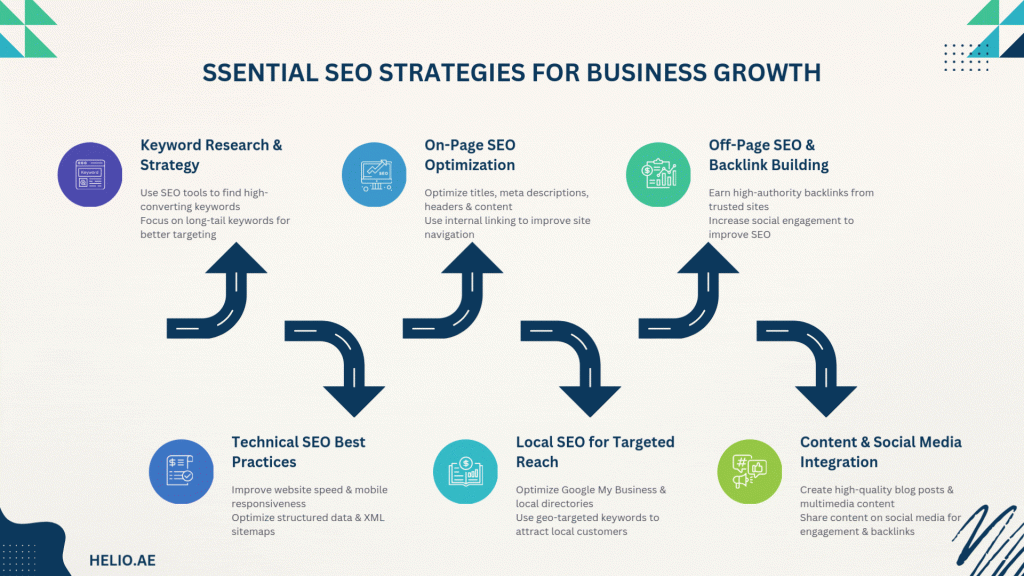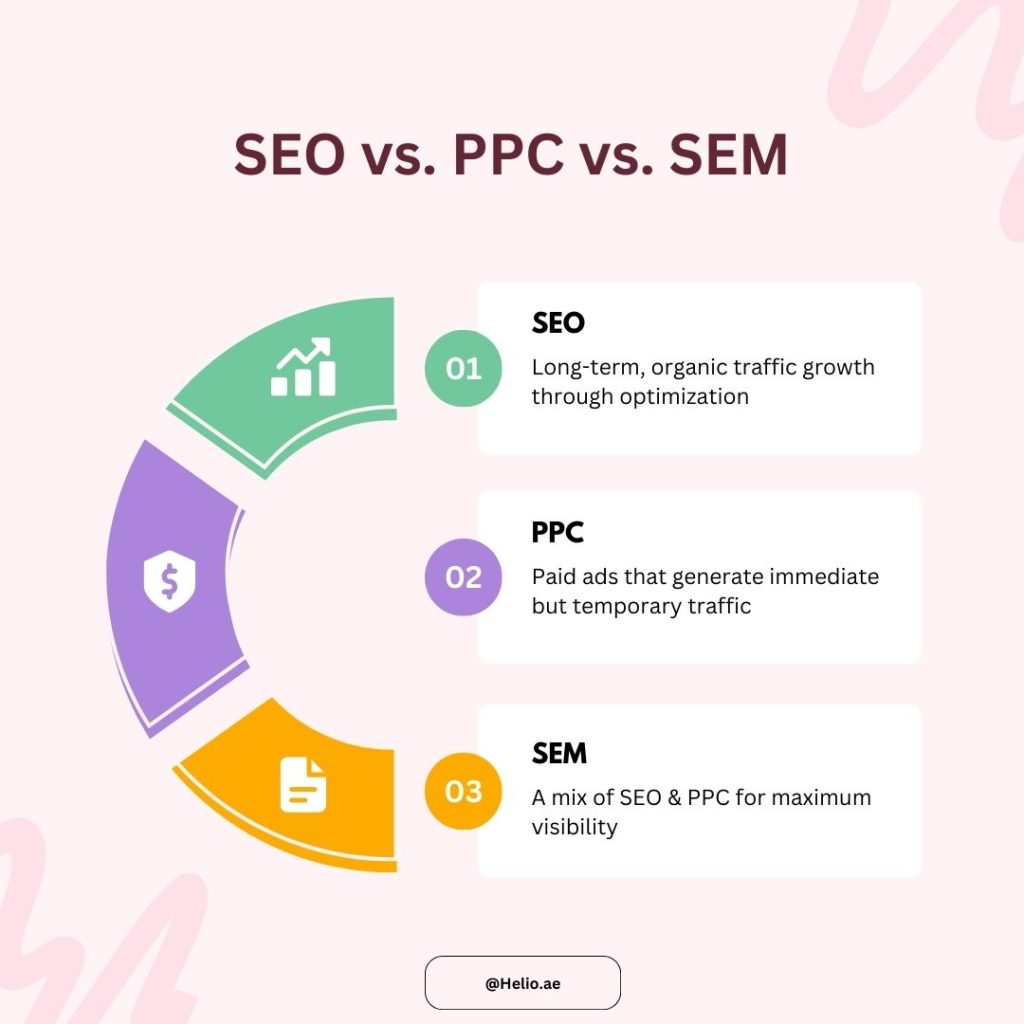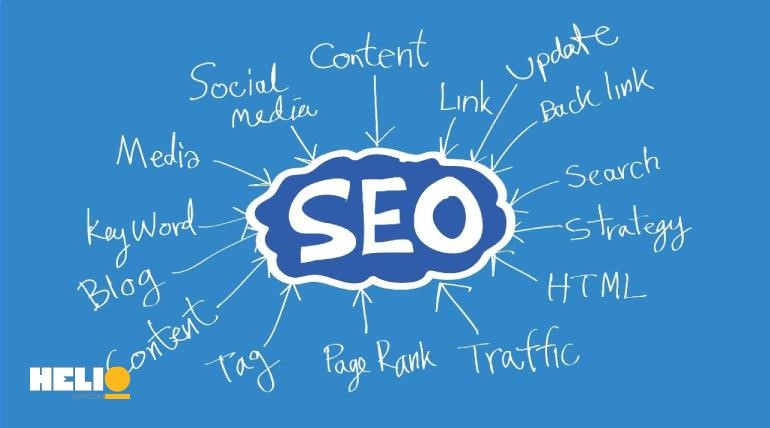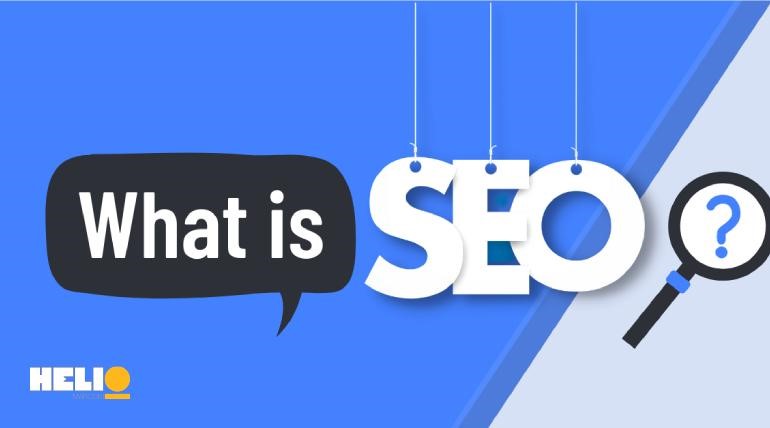Listen to this blog post:
Search Engine Optimization (SEO) is a crucial aspect of digital marketing that involves optimizing your website to rank higher in search engine results pages (SERPs). SEO aims to increase online visibility, attract organic traffic, and ultimately drive conversions. This guide will provide an in-depth understanding of SEO, its importance, and how to leverage it to grow your business.
Helio marketing and advertising company guide offers a comprehensive understanding of SEO. By exploring the core principles and strategic techniques, you can improve your website’s performance and bolster your digital presence. Effective SEO involves both on-page and off-page strategies, such as keyword research, content optimization, backlink building, and technical SEO audits.
What is SEO?
SEO stands for Search Engine Optimization. It is the practice of enhancing a website’s content, structure, and technical setup to improve its ranking on search engines like Google, Bing, and Yahoo. By optimizing for specific keywords and providing a great user experience, businesses can attract more visitors to their websites.
Why is SEO Important?
SEO is vital for online visibility and organic traffic generation. When your website ranks high on SERPs, it is more likely to be clicked on by users. This increased visibility leads to higher traffic, which can result in more leads and sales. For small businesses, start-ups, and established brands alike, SEO is a cost-effective way to reach potential customers and compete in the digital marketplace.
Main Goals of SEO
The primary objective of SEO is to fulfill user search needs with relevant, high-quality content and an optimal user experience. Achieving this involves:
- Relevance: Ensuring your content matches what users are searching for.
- Quality: Providing well-researched, informative, and engaging content.
- User Experience: Optimizing site speed, mobile-friendliness, and overall usability.

SEO vs. PPC vs. SEM
Understanding the differences between SEO, Pay-Per-Click (PPC) advertising, and Search Engine Marketing (SEM) is essential:
| Strategy | Description | Pros | Cons |
|---|---|---|---|
| SEO | Focuses on optimizing organic search results for long-term visibility. | Cost-effective, long-lasting results, builds trust and authority. | Takes time to see results, requires ongoing effort. |
| PPC | Paid advertising to appear at the top of search results instantly. | Immediate visibility, scalable, measurable ROI. | Requires continuous investment, can be costly for competitive keywords. |
| SEM | Combines both SEO and PPC for a comprehensive search engine strategy. | Provides both long-term and immediate results, more control over visibility. | Requires more resources and can be expensive depending on the campaign. |
The Basics of SEO
SEO involves several fundamental principles and components:
- Keyword Research: Identifying relevant keywords that your target audience is searching for.
- On-Page SEO: Optimizing individual web pages for specific keywords.
- Off-Page SEO: Building authority and relevance through external links and social signals.
- Technical SEO: Ensuring your website is crawlable and indexable by search engines.
| SEO Component | Description | Goal |
|---|---|---|
| Keyword Research | Identifying the search terms that your audience is using to find relevant services. | Drive targeted traffic to your website by selecting the most relevant keywords. |
| On-Page SEO | Optimizing individual web pages to rank higher and earn more relevant traffic. | Improve rankings by optimizing content, title tags, meta descriptions, and images. |
| Off-Page SEO | Building site authority through external factors like backlinks, social signals, and reviews. | Increase website authority and drive referral traffic through reputable sources. |
| Technical SEO | Optimizing your website’s infrastructure for better crawling, indexing, and user experience. | Enhance website performance, speed, and mobile-friendliness for improved search rankings. |
How to Learn SEO
There are various resources available to help you learn SEO:
- Online Courses: Platforms like Coursera, Udemy, and HubSpot offer structured learning paths.
- Blogs and Websites: Stay updated with industry insights from sites like Moz, Search Engine Land, and Neil Patel’s blog.
- Books: Consider reading “The Art of SEO” by Eric Enge and “SEO 2022” by Adam Clarke.
- Webinars and Workshops: Participate in events hosted by industry experts to gain practical knowledge and network with peers.
Does SEO Require Coding?
While basic SEO does not require extensive coding knowledge, having a grasp of HTML, CSS, and JavaScript can be beneficial. Understanding how to edit meta tags, improve site speed, and fix technical issues can enhance your SEO efforts.
How Long Does It Take for SEO to Work?
SEO is a long-term strategy typically taking several months to see significant results. Factors influencing the timeframe include:
- The competitiveness of the industry.
- The quality of the content.
- The existing authority of the website.
Patience and consistent effort are essential to successful SEO.
How to Start an SEO Strategy
Starting an effective SEO strategy involves several steps:
- Define Goals: Identify what you want to achieve with SEO, such as increasing traffic or improving conversions.
- Conduct an Audit: Analyze your website performance and identify areas for improvement.
- Keyword Research: Find keywords that align with your business objectives and user intent.
- Optimize On-Page Elements: Improve page titles, meta descriptions, headers, and content.
- Build Quality Backlinks: Focus on earning links from reputable websites.
- Monitor and Adjust: Use tools like Google Analytics and Search Console to track performance and make necessary adjustments.
How to do Keyword Research
Keyword research is a critical component of SEO. Here’s how to do it effectively:
- Use Tools: Tools like Google Keyword Planner, Ahrefs, and SEMrush can help you discover relevant keywords.
- Analyze Competitors: Look at the keywords your competitors are ranking for and identify gaps you can fill.
- Consider User Intent: Understand why users search for specific terms and create content that meets their needs.
- Focus on Long-Tail Keywords: These are more specific phrases that often have less competition and higher conversion rates.
What is On-Page SEO?
On-page SEO involves optimizing elements within your website to improve search engine rankings. Key tactics include:
- Optimizing Titles and Meta Descriptions: Ensure they are relevant, compelling, and include target keywords.
- Using Header Tags: Structure your content with H1, H2, and H3 tags to improve readability and SEO.
- Internal Linking: Link to other relevant pages on your site to enhance navigation and distribute link equity.
- Content Optimization: Create high-quality, keyword-rich content that provides value to users.
- Image Optimization: Use alt text and descriptive filenames to help search engines understand your images.

What is Off-Page SEO?
Off-page SEO focuses on improving website authority and relevance through external factors. Key strategies include:
- Link Building: Acquire high-quality backlinks from reputable websites.
- Social Media Engagement: Promote your content on social media platforms to increase visibility and drive traffic.
- Guest Blogging: Write articles for other websites to earn backlinks and reach new audiences.
- Online Reviews: Encourage positive reviews and manage your online reputation.
How Does Technical SEO Work?
Technical SEO involves optimizing your website’s infrastructure to ensure search engines can easily crawl and index it. Key aspects include:
- Website Speed: Improve load times by optimizing images, using a content delivery network (CDN), and minimizing code.
- Mobile-Friendliness: Ensure your site is responsive and provides a good user experience on mobile devices.
- Secure Connections: Use HTTPS to secure your website and build user trust.
- XML Sitemaps: Create and submit a sitemap to help search engines understand your site structure.
- txt: This file controls which pages search engines can crawl and index.
| Technical SEO Component | Description | Action |
|---|---|---|
| Website Speed | Improve load times by optimizing images and using a content delivery network (CDN). | Minimize code and optimize images to ensure quick loading times for better user experience and SEO. |
| Mobile-Friendliness | Ensure your website is responsive and accessible on mobile devices. | Test your site on mobile and optimize design for mobile-first indexing. |
| Secure Connections | Switch to HTTPS to secure your website and build trust with users. | Install SSL certificates to ensure a secure connection for users and search engines. |
| XML Sitemaps | Submit a sitemap to help search engines understand your website structure. | Create and submit an XML sitemap to Google Search Console for better crawling and indexing. |
| Robots.txt | Control which pages search engines can crawl and index on your site. | Ensure that your robots.txt file is properly configured to allow search engines to crawl key pages. |
What is Local SEO?
Local SEO optimizes your online presence to attract more business from relevant local searches. Key strategies include:
- Google My Business: Claim and optimize your listing with accurate business information, photos, and reviews.
- Local Keywords: Use geo-specific keywords in your content and meta tags.
- Citations: Ensure your business name, address, and phone number (NAP) are consistent across all online directories.
- Reviews: Encourage satisfied customers to leave positive reviews on Google and other sites.
International SEO
International SEO involves optimizing your website to target audiences in different countries and languages. Key tactics include:
- Hreflang Tags: Use these tags to indicate language and regional targeting to search engines.
- Localized Content: Create content that resonates with local audiences and considers cultural nuances.
- Country-Specific Domains: Use country code top-level domains (ccTLDs) or subdirectories to target different markets.
- Technical Considerations: Ensure your site is accessible and performs well in target countries.
The Importance of Content in SEO
High-quality, relevant content is the cornerstone of successful SEO. It helps attract and engage users, encourages them to spend more time on your site, and signals to search engines that your site is valuable. To create compelling content:
- Focus on User Intent: Understand what your audience is searching for and provide content that meets their needs.
- Be Informative and Engaging: Offer valuable information in an engaging format, such as articles, videos, infographics, and podcasts.
- Update Regularly: Keep your content fresh and up-to-date to maintain relevance and authority.

SEO Trends and Future Predictions
Staying updated on current trends and future predictions is essential for maintaining a competitive edge. Some emerging trends include:
- Voice Search Optimization: With the rise of voice assistants, optimizing content for voice search is becoming increasingly important.
- AI and Machine Learning: Search engines use AI and machine learning to understand user intent better and deliver more relevant results.
- Mobile-First Indexing: Google now prioritizes mobile-friendly websites in its search rankings, making mobile optimization crucial.
- Visual Search: The popularity of visual search tools like Google Lens and Pinterest Lens is growing, highlighting the need for image optimization and visual content.
- User Experience (UX): Search engines are emphasizing user experience metrics, such as page speed, mobile-friendliness, and overall usability.
BONUS 1: How to Create the Best SEO Content
Creating optimized content involves several vital strategies:
- Keyword Integration: Naturally incorporate target keywords into your content, ensuring it flows well and remains engaging.
- Compelling Headlines: Craft attention-grabbing headlines that include relevant keywords and encourage clicks.
- Structured Content: Use headings, bullet points, and short paragraphs to make your content easy to read and digest.
- Multimedia: Incorporate images, videos, and infographics to enhance your content and keep users engaged.
- Internal Links: Link to other relevant pages on your site to improve navigation and keep users on your site longer.
BONUS 2: How to Use Social Media to Improve Your SEO
Social media can play a significant role in enhancing your SEO efforts:
- Share Content: Promote your content on social media platforms to increase visibility and drive traffic to your site.
- Engage with Your Audience: Respond to comments, participate in discussions, and build relationships with your followers.
- Build Backlinks: Encourage social shares and mentions to generate backlinks and improve your site’s authority.
- Monitor Trends: Stay updated on trending topics and incorporate them into your content strategy to capitalize on current interests.
- Leverage Influencers: Collaborate with influencers in your industry to expand your reach and attract more traffic to your site.

Elevate Your Business with Helio Digital Marketing
Understanding and implementing SEO is crucial for small business owners, marketing professionals, established brands, and start-ups. By optimizing your website for search engines, you can increase online visibility, attract organic traffic, and drive business growth. Remember to focus on user intent, create high-quality content, and stay updated on industry trends to maintain a competitive edge.
Ready to take your business to the next level? Get help from Helio digital marketing and optimize your online presence today.





